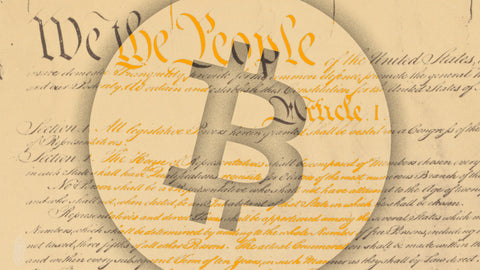
Crypto Bros Tried to Buy the Constitution. Here’s Why Billionaire Ken Griffin Stopped Them.
At stake was a crowdsourced $40 million — and the fate of one of modern history’s most important documents. So were the circumstances at Sotheby’s New York last November, in a do-or-die auction for a rare first printing of the U.S. Constitution that pitted populist-minded cryptocurrency and NFT buffs against traditionally wealthy parties.
The anonymous winner, who shelled out $3 million above a maximum bid from crypto-cabal Constitution DAO, was later revealed to be hedge-fund billionaire Ken Griffin. Motivating his purchase, he recently told The Wall Street Journal, was the fear that ConstitutionDAO — which intended to purchase the government charter “for the people” — wouldn’t take appropriate care of the historic treasure.
GET HISTORY 'S GREATEST TALES—RIGHT IN YOUR INBOX
Subscribe to our Historynet Now! newsletter for the best of the past, delivered every Wednesday.
Close
Thank you for subscribing!
Submit
down to the wire
Griffin, an art collector who favors works by Jasper Johns and Willem de Kooning, isn’t exactly known for being a history lover in the way, of, say, private equity billionaire (and Magna Carta owner) David Rubenstein. Observers were naturally curious as to what compelled him to go head-to-head last year with the now-defunct ConstitutionDAO after the 17,000-plus member group raised more than $40 million to buy the Constitution. (For the uninitiated, “DAO” stands for “decentralized autonomous organization, a transparent, member-controlled entity with no central leadership.)
Griffin acknowledged ConstitutionDAO’s “impressive” public fundraising effort, which eclipsed Sotheby New York’s initial $20 million estimate by a landslide and might have succeeded in its goal if not for the billionaire’s deus ex machina (which involved a quick telephone call and just a few extra million).
However, he added, “there were important questions about whether a large decentralized group would be able to manage the responsibilities necessary to protect this rare document.”
Griffin said he did reach out to ConstitutionDAO following the auction to see if they wanted to co-fund the document’s display, or to decide where it’s shown half the time; after all, there are only a handful of surviving original copies. One of the group’s founding members, Graham Novak, said Griffin only offered to sell them its digital rights, and that the DAO hadn’t known anything about having a potential say in its showing.
For the people, by the people
One party who was interested, and ultimately successful, in displaying Griffin 's new/old artifact was Olivia Walton, niece of Walmart heir Alice Walton. She, too, tried to score this copy of the Constitution last November — and, as a consolation prize, managed to borrow it for her family’s art museum, the Crystal Bridges Museum of American Art, in Bentonville, Arkansas. It's there on display through Jan. 2, 2023, as part of a hybrid history-art exhibit on democracy, according to The Guardian.
As for Griffin, he now appears to have caught the history bug: According to the Journal, just five days after nabbing the Constitution, he splurged on a $1.5 million copy of the Amendments to the Constitution of the United States (later ratified as the Bill of Rights), which is also now on display at the Crystal Bridges Museum.
GET HISTORY 'S GREATEST TALES—RIGHT IN YOUR INBOX
Subscribe to our Historynet Now! newsletter for the best of the past, delivered every Wednesday.
Close
Thank you for subscribing!
Submit
